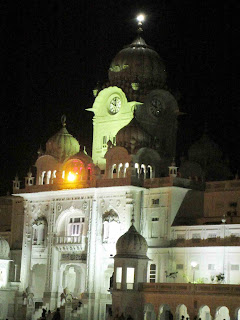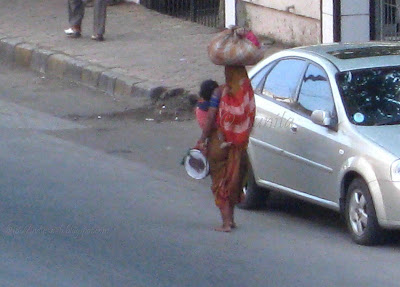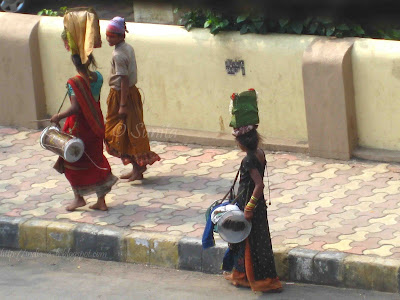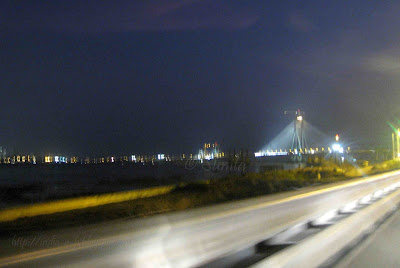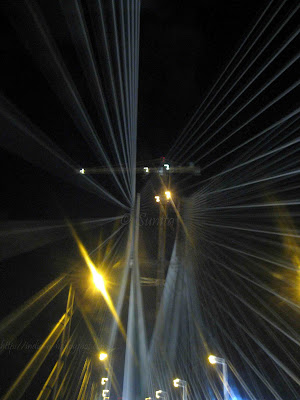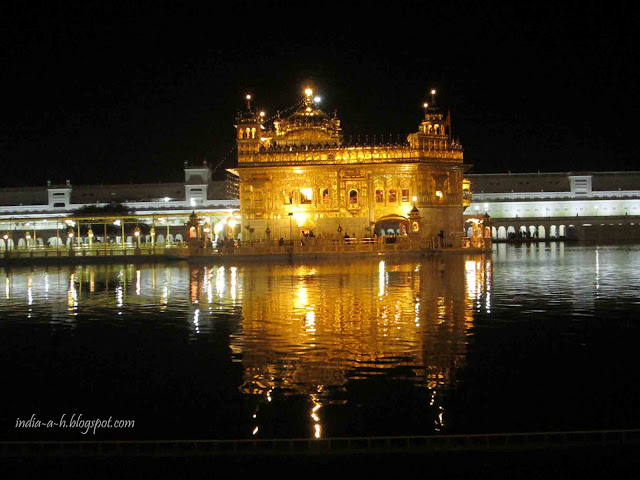 |
| The Golden Temple at Amritsar |
It had to be fate that we reached Amritsar on Baisakhi. It was not a trip which I had intended to make. Nor was it a site I would have ordinarily chosen to visit.
I'm usually not overly keen on visiting prominent religious sites, mainly because they are almost always over-crowded to the point of suffocation. And mobs of pilgrims, excited about reaching their longed-for destination and the inevitable hordes of hawkers belligerently pushing their wares, leave me half-panicked and hunting for the nearest exit (yes, the term 'claustrophobic' does pop up in my mind).
But reach there we did, late at night and famished and tired after a long drive from Chandigarh. After trawling the streets for the best
dhaabas (the people of Punjab are famed for their love of good food, so it stood to reason that we'd find some of the best eateries here. And we wanted authentic Punjabi fare, so a
dhaaba it had to be! ), we suddenly found ourselves in the vicinity of the Golden Temple. We were scheduled to visit the next day, with a proper guide escorting us (and equally important, with enough light to click all the pictures we wanted). It was close to midnight but it was just too tempting to resist. Just a quick look, we promised ourselves. Here we had the holiest of holies of the Sikh religion and we just had to answer the call. Even though none of us in our group of 10 were Sikhs.
There is something very powerful about the atmosphere here. It is almost magnetic!
The Harmandir Sahib or the
Golden Temple is one of the most imposing sacred sites I've seen, yet it is surrounded by a quiet dignity. It is a juxtaposition of conflicting images. The serene simplicity of the structures around it and the extremely grand heart of it all. The tranquilty of the Harmandir Sahib in the middle of the Sarovar (or the sacred pool), is magnified by its softly gleaming reflection.
But first, to enter the Temple complex you have to cover your head and remove footwear. If you're an impromptu visitor as I was, don't worry. You'll get scarves for your head near the entrance and a cloak room that will store your shoes too till you leave.
I had no idea what to expect really. Apart from the grandeur of the Golden Temple and the legendary 'Guru ka langar' (the incredible community kitchen which feeds all visitors to the Temple around the clock), I didn't really know much about it. Which is how I like it ... minus all the preconceived ideas, prejudices or biases.
But, if you'd like more information, this is where those links at the end of the post will come in handy.
These pictures will share some of what I saw. It's not very comprehensive nor are some of the pictures as clear as I would like (I was using a point-and-shoot at night ) but they're the best I have to go with right now.
 |
| The main entrance to the Temple complex |
The main entrance is imposing enough and gives no hint of the Golden Temple within.
These guards at the entrance were so tall! Quite daunting to look at, but they were nice enough to pose for a photo when a visitor asked them (why didn't I do that?!).
So many people. All awake at midnight (quite a few children too), answering the call of their faith. Strangely enough, there was hardly any noise or bustle that one would ordinarily associate with such a large gathering. Instead there is a quietness that is very soothing. Almost a meditative silence of being.
A whole flight of steps leads you down to the circumambulatory path around the holy tank.The water (referred to as 'Amrit', meaning 'nectar'. Amritsar or Amrit Sarovar is a reference to this holy tank of nectar ) is almost alive with the golden reflection of the Harmandir Sahib.
If anything, it is rendered even more grand by the simplicity and purity of the white structures and white marble path around the tank. But, see for yourself ...
And, around the tank, there were huge rolls of matting. I was told that the daily cleaning was being done by the 'sevadars' or the devout who had volunteered to work as a mark of their faith. I found that so heart-warming! There were no loud protestations of faith, but a quiet getting-on with whatever work needed to be done, no matter how menial.
I can't think of anything more grace-filled than that.
Perhaps certain things are meant to be. Perhaps a certain grace moves the universe so that everything works out in the best possible way.
I, for one, think the universe definitely swung me a huge favour when I got to experience the wonder of the Golden Temple by night.
Links:
Guide map of Sri Harmandir Sahib (Golden Temple)
Art and architecture of the Golden Temple
Golden Temple
The Granth Sahib
Blog-post













